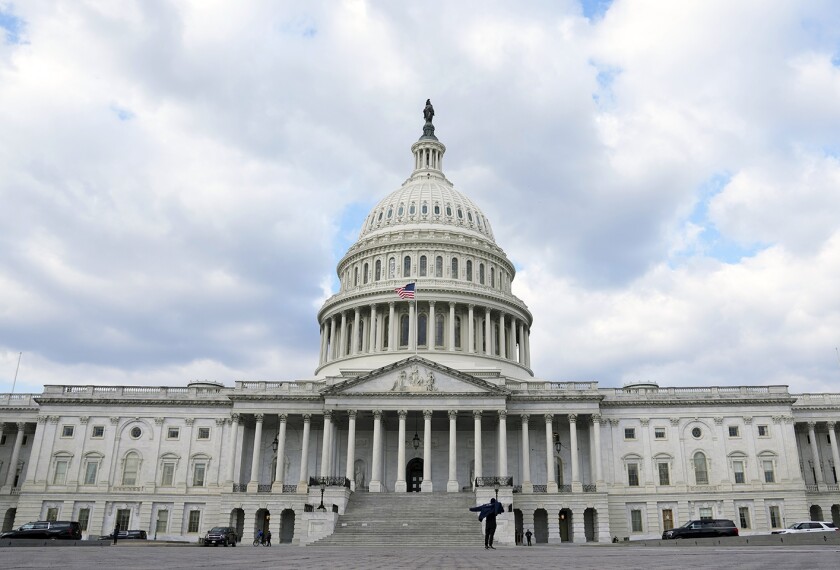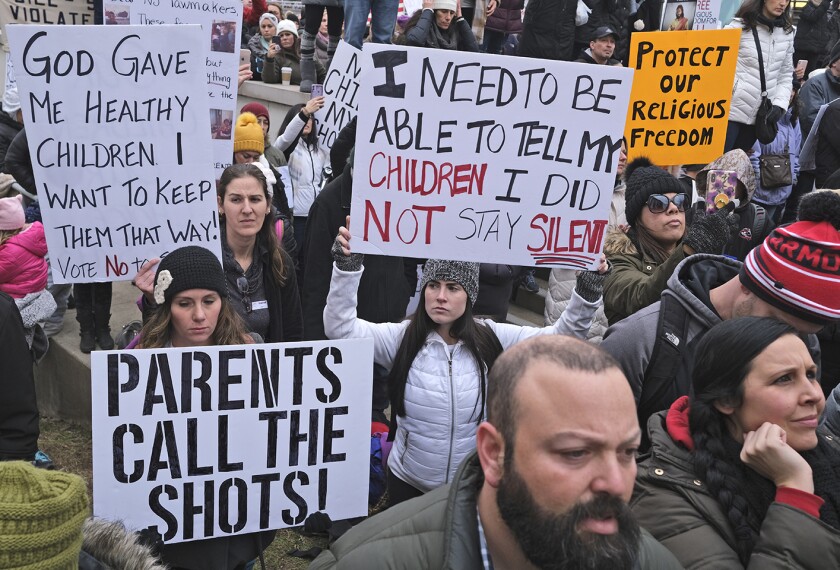Here are summaries of recent annual addresses by governors around the country.
ALABAMA
GOV BOB RILEY (R) • FEB. 3
Gov. Riley used his State of the State address to tout the success of three education programs he said have helped raise reading and math scores: a statewide K-3 reading program, and a mathematics and science initiative that has been part of selected schools.
Read more from our updated collection of “2009 State of the States.”
Mr. Riley also said the state’s distance-learning program has given students in low-income and rural areas the opportunity to take Advanced Placement and other high-level courses.
All of those programs, the governor said, would be “protected from cuts” in his forthcoming budget proposal. Although Alabama’s financial situation isn’t as bad as that of other states, Mr. Riley said, he warned that “education funding this year is not going to be at the level we want it to be.”—David J. Hoff
KENTUCKY
GOV. STEVEN L. BESHEAR (D) • FEB. 4
Gov. Beshear is calling for a “thorough review” of Kentucky’s 18-year-old school reform law and will form a task force charged with improving the quality of children’s services.
The 1990 Kentucky Education Reform Act drew national praise and attention, but the state needs to revisit it to “not only check our course and see if any corrective steering is necessary, but just as importantly, to renew and re-energize our commitment to education,” Mr. Beshear said.
He plans to convene educators, legislators, and business leaders to review the KERA law and recommend changes. In discussing the state’s budget crisis, the first-term governor said he wants to protect K-12 and higher education programs from cuts.—D.J.H.
MICHIGAN
GOV. JENNIFER M. GRANHOLM (D) • FEB. 3
The governor told lawmakers that education remains one of the top three priorities for the state, which has fared among the worst in the nation in the economic crisis. Ten “promise zones” would be set up in poor communities that would guarantee free college access to students.
Gov. Granholm also announced the creation of a Michigan College Access Network, to be launched at an April education summit. The network would be charged with ensuring all students and their parents get access to information on postsecondary educational options.
Education, Gov. Granholm said, will help spur job growth in the economically battered state. She said that “the two critical questions our families must answer are: Where are the kids going to college after high school—not if they are going, but where? What training do mom and dad need to move up at work or get a new job in a new field?” —Dakarai I. Aarons
MISSOURI
GOV. JAY NIXON (D) • JAN. 27

In his first State of the State address, Gov. Nixon pledged to fully fund planned increases in state aid to K-12 schools—even as he seeks to shrink the state’s government to its smallest size in a decade.
The Show Me State is in the midst of a multiyear transition to a new, more generous school funding formula. Districts are scheduled to receive $3 billion in fiscal 2010, an increase of $61.7 million over this year’s funding level.
The governor’s proposed $8.8 billion budget also calls for increases in funding for early-childhood-education programs, special education, the state’s career-ladder program for teachers, and student transportation and food services. He told lawmakers that he also wants to put aside an extra $250,000 for alternative schools for students who are disruptive in mainstream classes.
The state’s public colleges and universities would also see increases under the governor’s budget plan, provided that they agreed to freeze tuition rates this year. Mr. Nixon said he wants to expand the state’s A+ Program, which provides two-year scholarships for graduating high school students to attend two-year community colleges, and vocational or technical schools.
The increases come as the state faces a deficit of a quarter-billion dollars in its fiscal 2009 budget and the governor makes plans to cut more than 1,300 jobs from the state payroll.—Debra Viadero
OKLAHOMA
GOV. BRAD HENRY (D) • FEB. 2
Gov. Henry, in his annual speech, congratulated legislators on increasing teacher pay, improving early-childhood education, strengthening accountability in schools, and providing funding for underprivileged students to go to college.
He also praised the state’s actions in improving students’ health through initiatives such as the Strong and Healthy Oklahoma program, which doubles physical education requirements and restricts the selling of unhealthy drinks and snack foods at schools. Looking forward, the governor encouraged lawmakers to finance a “graduation coaches” program that would match up community volunteers with students at risk of dropping out, an undertaking he emphasized in his 2008 State of the State speech as well.—Katie Ash
PENNSYLVANIA
EDWARD G. RENDELL (D) • FEB. 4
Gov. Rendell proposed a fiscal 2010 budget that increases the state’s basic education subsidy by 5.7 percent, saying even though the state is facing a $2.3 billion shortfall in the current budget year, it is imperative to invest in education.
In his annual budget address, the governor outlined a $61.7 billion spending plan that includes almost $1 billion in cuts in nearly every government agency. And while reductions in education programs were sprinkled liberally throughout his proposed budget, the overall proposed precollegiate spending plan of $9.9 billion represents a 2.8 percent increase over last year.
Gov. Rendell said Pennsylvania can use proposed federal stimulus dollars to help protect its education programs. Citing figures based on versions of the package still being considered, he said the state expected to get $1.26 billion per year in fiscal 2010 and fiscal 2011, and would have to devote 61 percent—or $771 million per year—to K-12 and collegiate spending.
Among the increases Gov. Rendell proposed is $300 million to help equalize spending, especially in needy districts, through the state’s new funding formula. He also called for spending $95 million—a 10 percent increase—to provide prekindergarten programs for an additional 12,850 children.
To boost affordability at public colleges and universities, the governor proposed that families earning less than $100,000 per year be allowed to pay what they can afford, but no less than $1,000. To pay for that program, he proposed legalizing video poker and taxing its proceeds. —Catherine Gewertz




